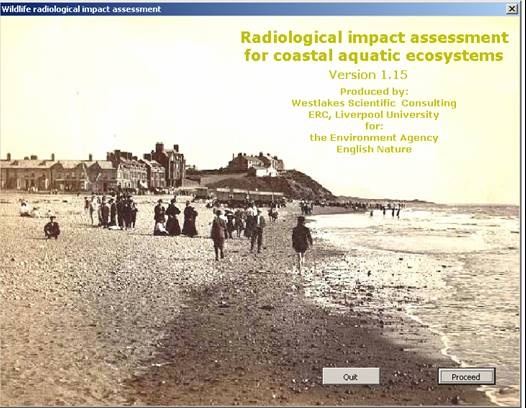Page History
England & Wales Environment Agency R&D128
| Align | ||
|---|---|---|
| ||
Developed to assess Natura 2000 sites for compliance with the EC Habitats Directive in England and Wales, this MS Excel spreadsheet model uses a similar approach to that of the ERICA Tool, although a smaller range of organisms and radionuclides is considered. Dose conversion coefficients (DCCs) are estimated using simple functions for energy deposition in a medium of unit density from point isotropic sources to represent the absorption of photons and electrons. Energy absorbed fraction functions are fitted separately for photons and electrons to provide an interpolation between calculated values. These functions are then integrated numerically using a stochastic (Monte-Carlo) algorithm to calculate the absorbed fraction. The model uses CR values from literature reviews to estimate activity concentrations in biota based on media concentrations. Guidance is provided on how to estimate CR values if they are missing for a given radionuclide-organism combination (Copplestone et al. 2003). The nature of this guidance ranges, for example, from using a CR value for an organism of similar ecology through to assuming that the CR value is 1 for a terrestrial organism if no data were available to suggest it may be higher than this. The guidance aims to provide conservative values where data-derived (or site-specific) CR values are lacking as the overall approach to the assessment is to be conservative.
...
D Copplestone, M D Wood, S Bielby, S R Jones, J Vives and N A Beresford, Habitats regulations for Stage 3 assessments: radioactive substances authorisations (2003)
| Info | ||
|---|---|---|
| ||
Spreadsheet prepared be the Belgian Nuclear Research Centre with the ability to calculate doses for all the environmentally relevant Ar, Kr and Xe isotopes, and covers not only the original R&D 128 organisms but also the ICRP reference animals and plants that the ERICA tool considers. |
...
